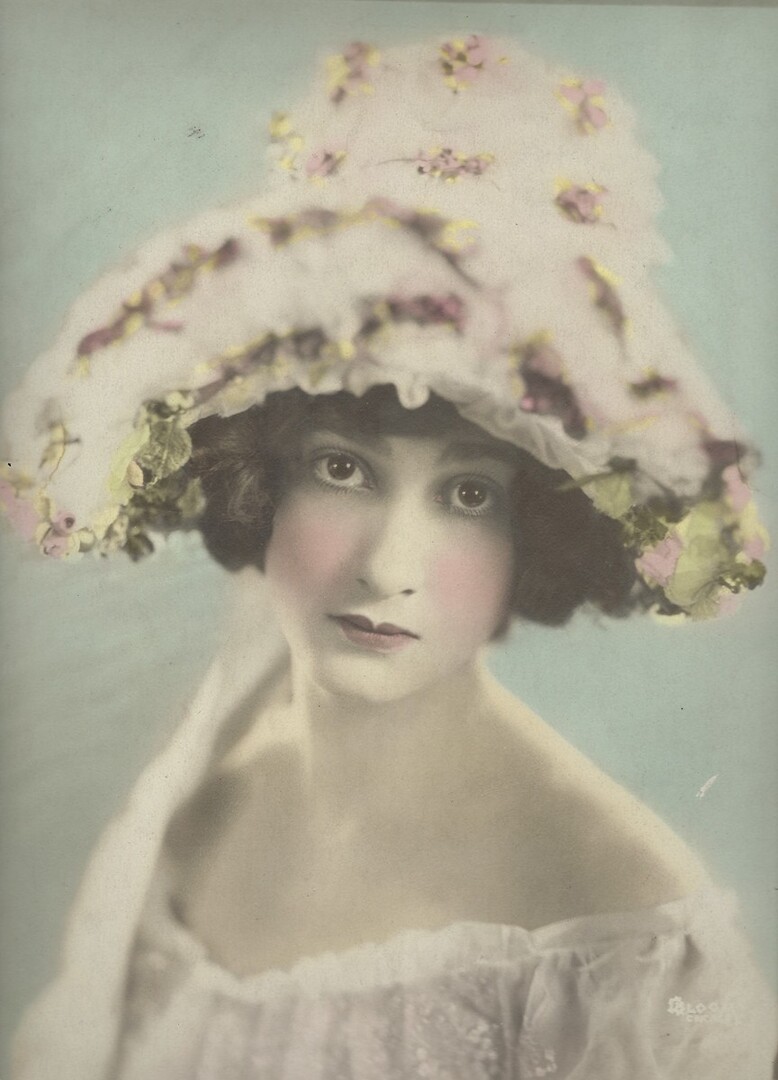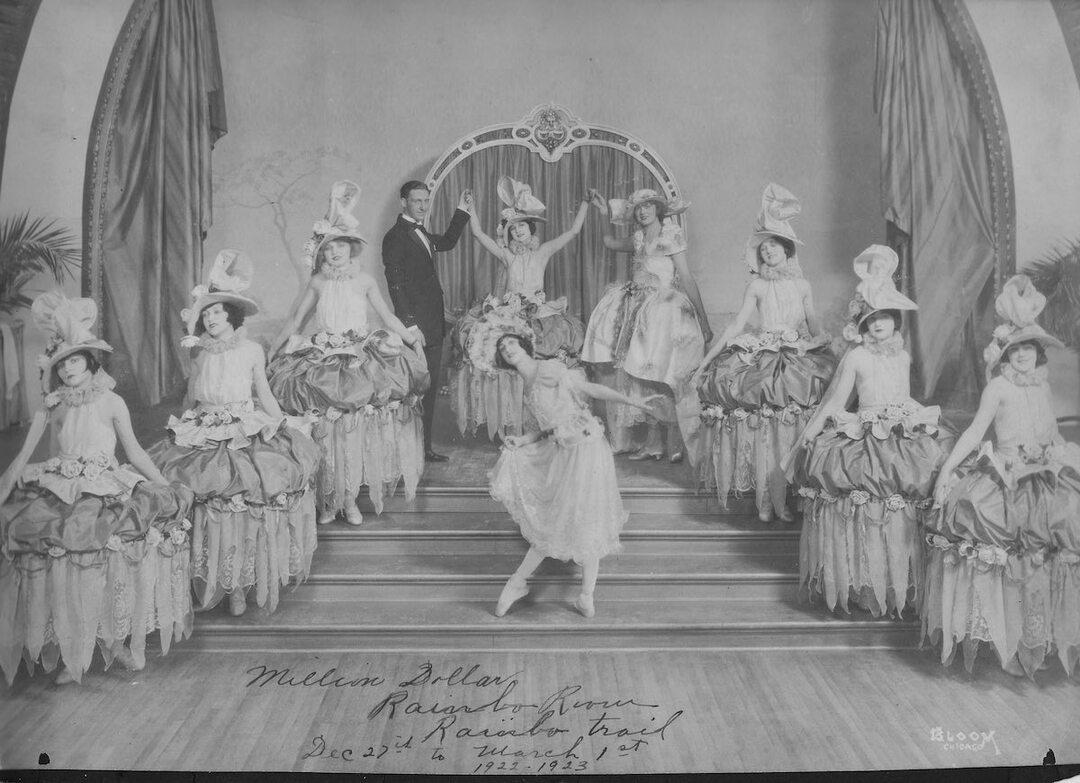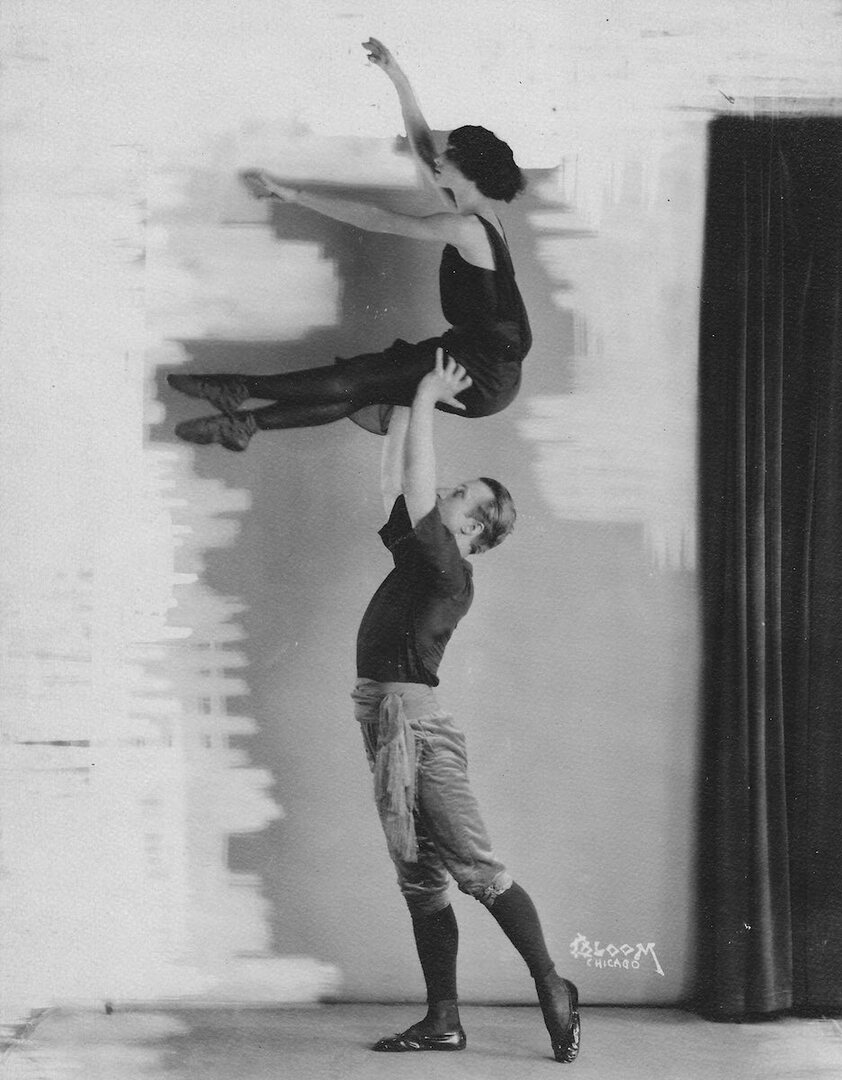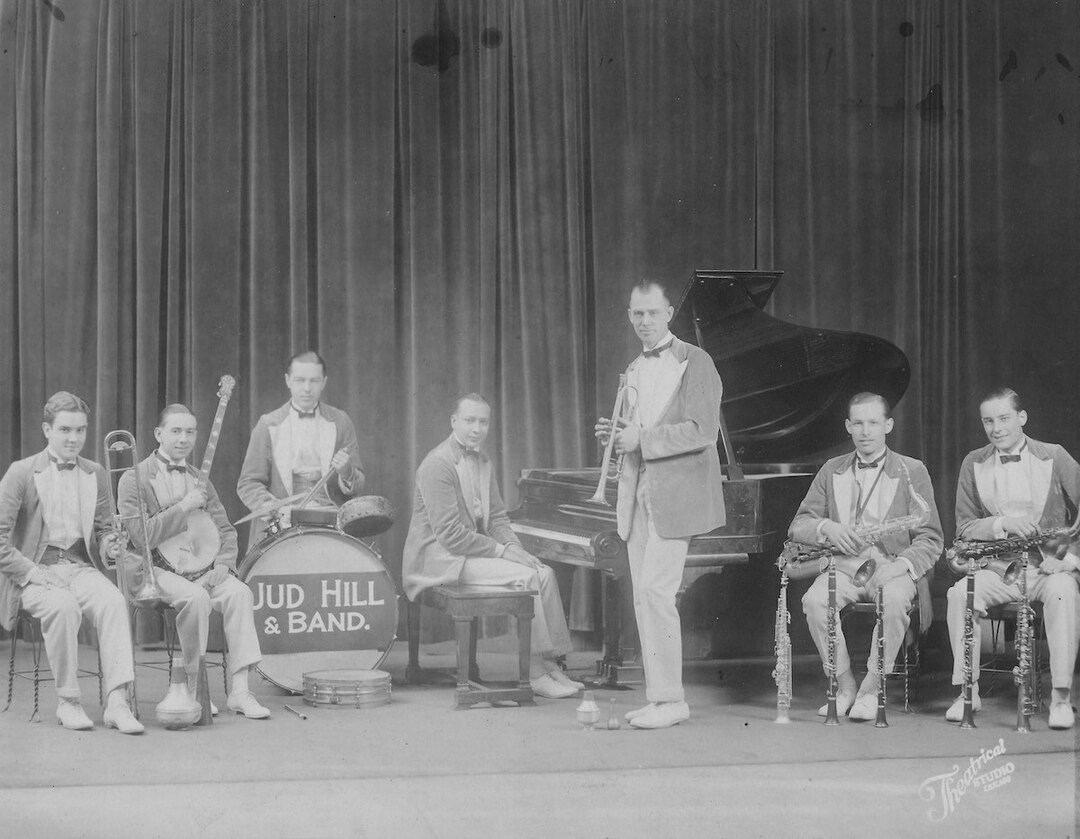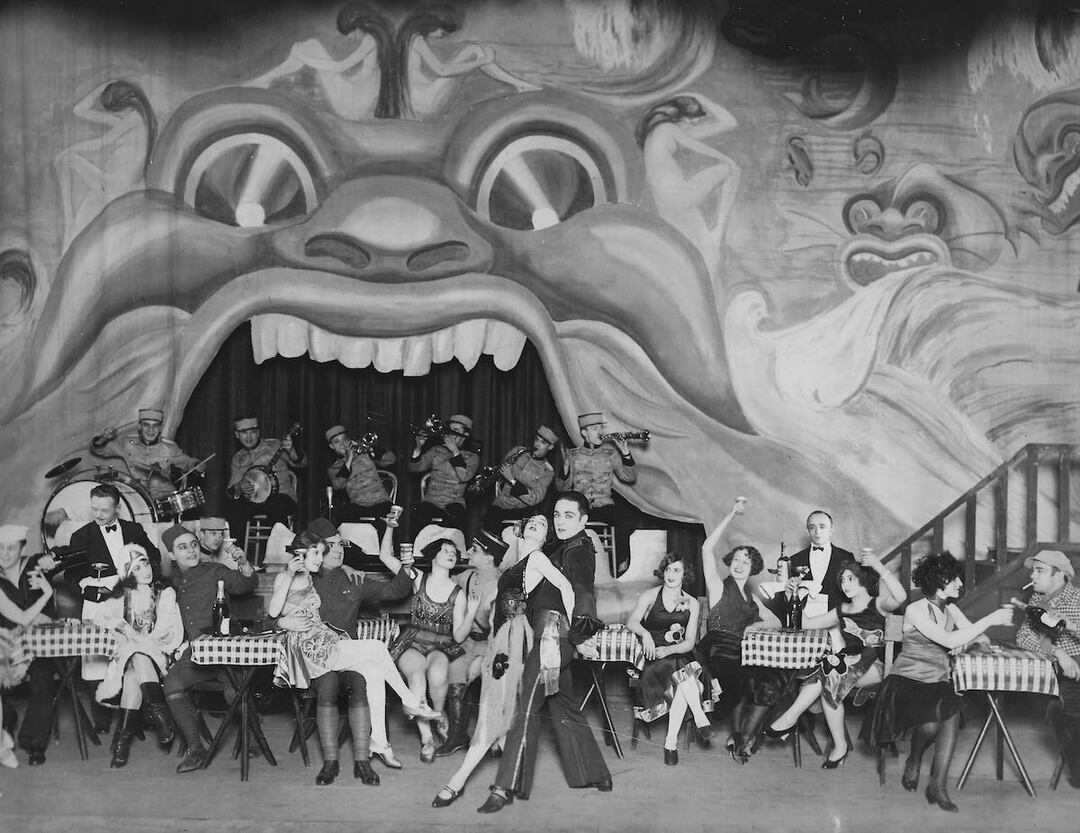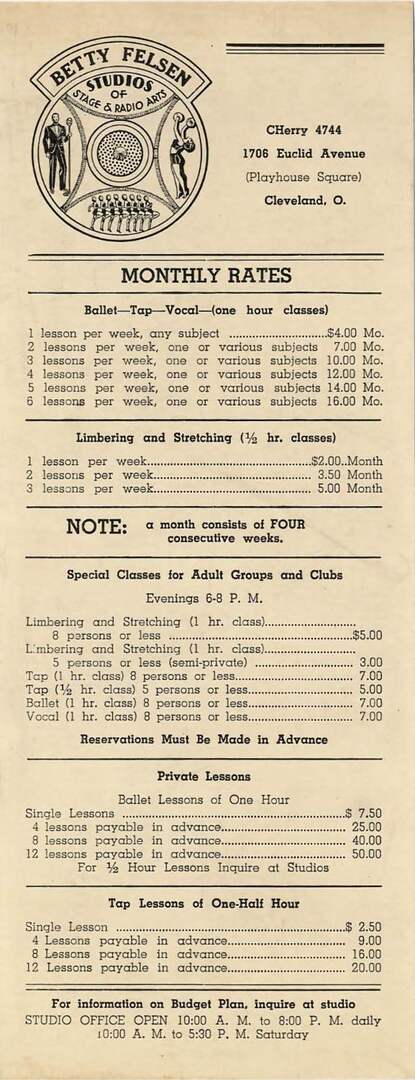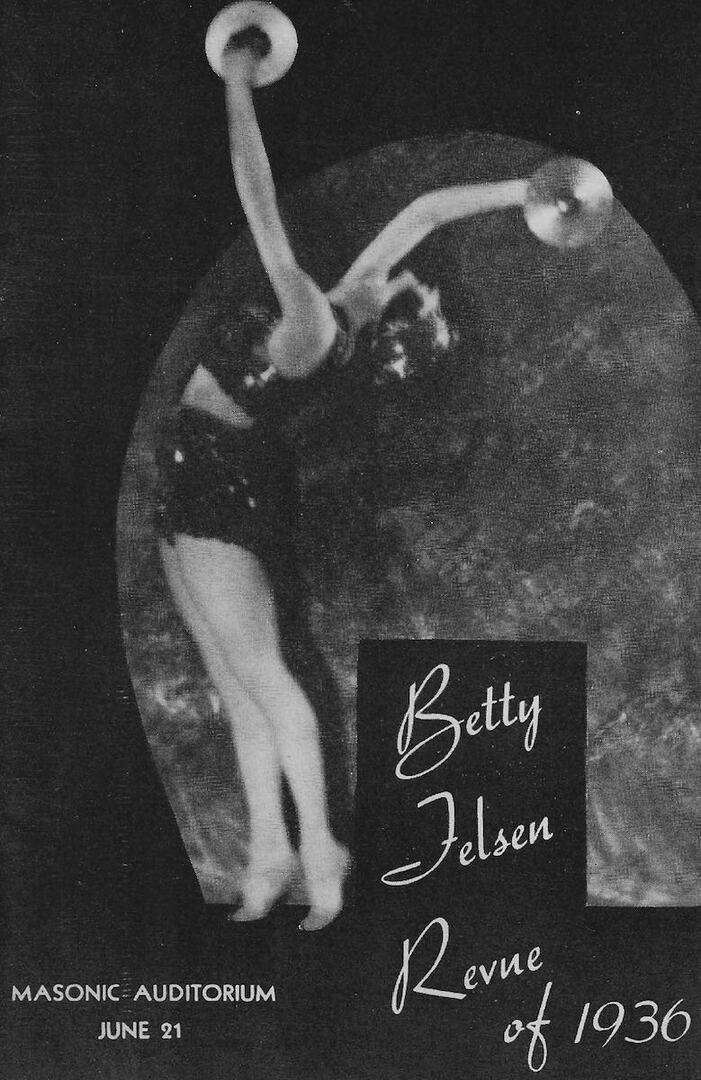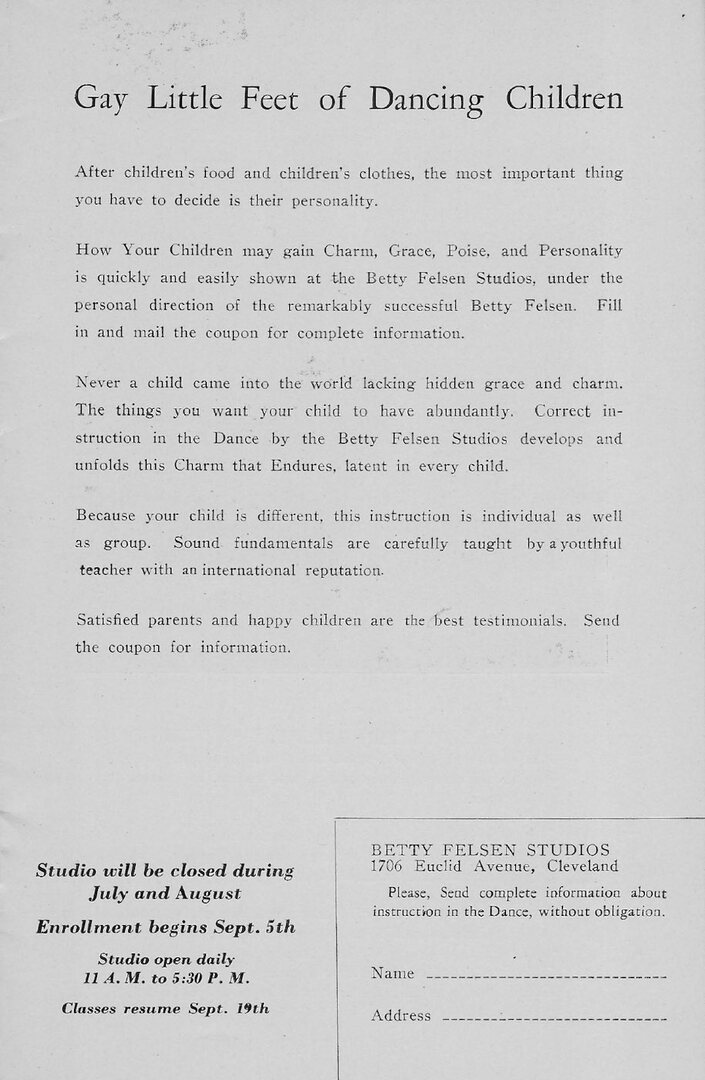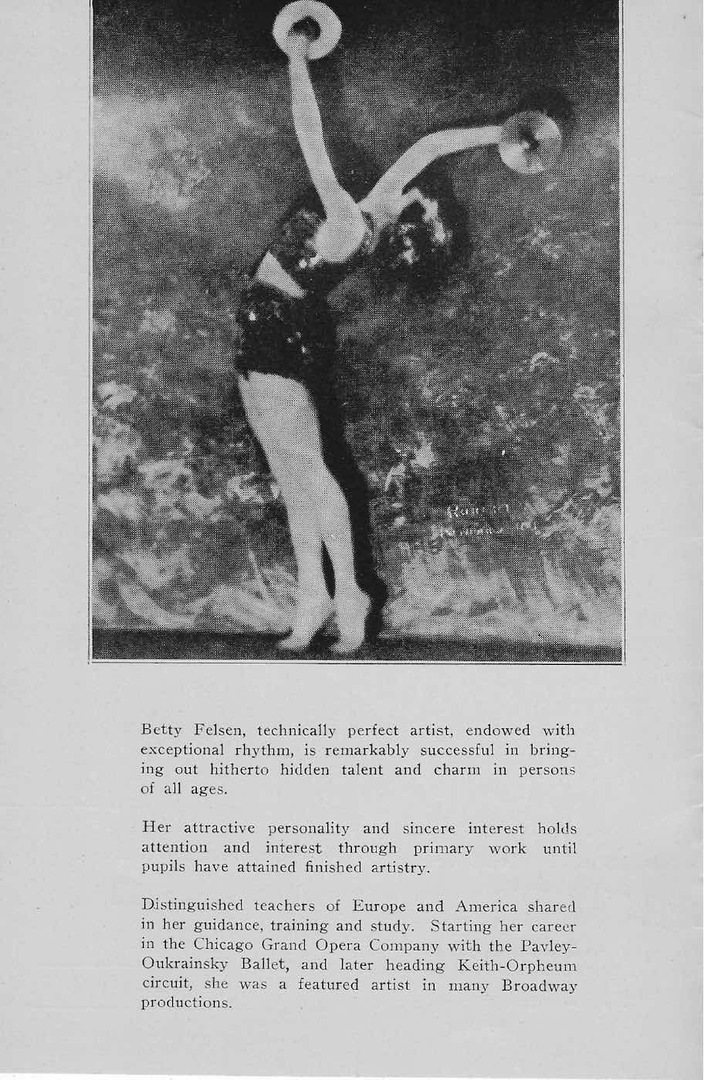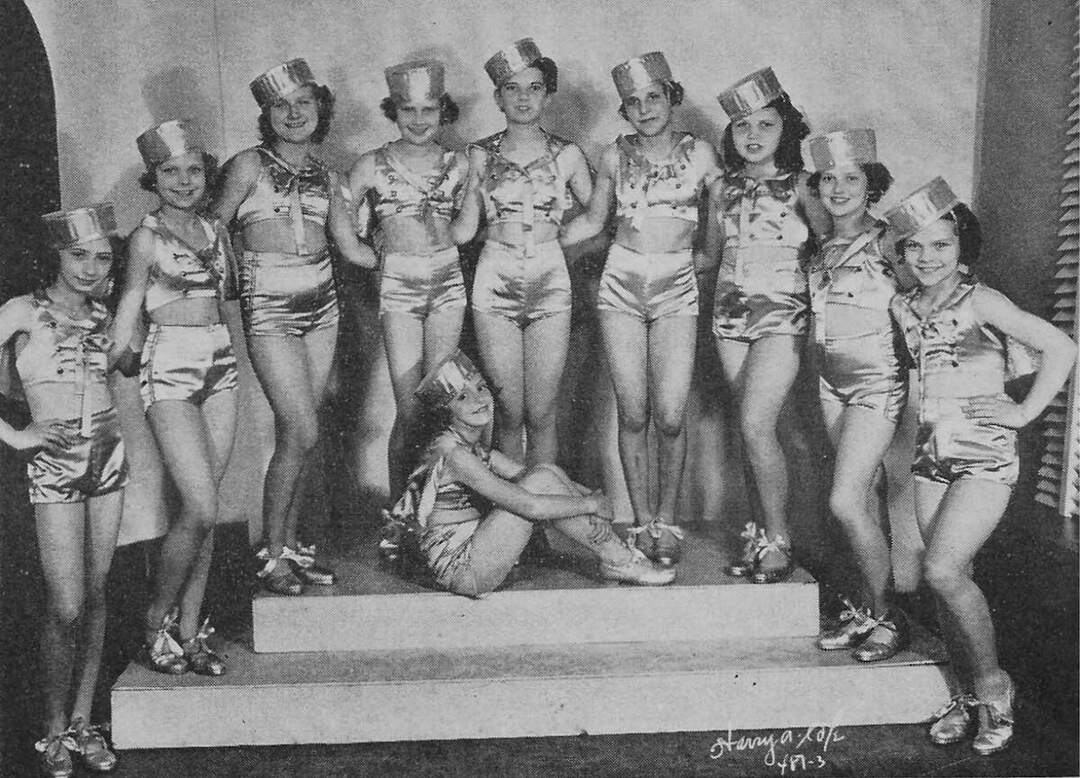
For several years during the Great Depression, renowned Chicago-born ballerina and vaudeville performer Betty Felsen brought her talent to Cleveland, where she operated a dance school that was part of a vibrant performing arts scene that flourished in Playhouse Square.
Born Bertha Felsenthal on June 9, 1905, in Chicago, Betty Felsen took her first dance lesson at age 8. Three years later, in 1916, she enrolled in the Pavley-Oukrainsky Ballet School, named after Andreus Pavley and Serge Oukrainsky, who had been partners of the famed Russian ballerina Anna Pavlova. The Pavley-Oukrainsky Ballet became the official ballet of the Chicago Opera Association in 1919, and from 1920 to 1922 Felsen performed nationwide as a ballerina soloist with the Chicago Opera, notably in the Verdi opera Aida.
By the latter year, Felsen, now 17 years old, wanted to assert creative control over her dancing and expand her repertoire, so she left the Chicago Opera to take up vaudeville. Her first major performance, co-starring with singer Ruth Etting in the musical Rainbo Trail, ran over four months in Chicago’s Million Dollar Rainbo Room in 1922 and 1923. In 1923 she began performing with Jack Broderick on the B. F. Keith and Pantages vaudeville circuits throughout the U.S. and Canada. Over the next four years, their act evolved from a simple dance act to one with more than twenty dancers, an orchestra, and elaborate costumes and sets, garnering critical acclaim.
When Broderick quit the act at its pinnacle in late 1927, Felsen continued to perform with her own troupe, Betty Felen & Company, for several more months. Failing to find a new partner with whom she had the same rapport or possessing the brilliance of Jack Broderick, she left the vaudeville stage in late summer 1928, moving first to Worcester, Massachusetts, where she co-owned and operated a dance school with a local vaudeville dancer in addition to performing locally and on summer tours around New England with her students.
In 1932, Betty Felsen left Worcester for Cleveland, where she opened the Betty Felsen School of the Dance, first located in the Carnegie Hall Building on Huron Road and then moving east to 1706 Euclid Avenue. Offering affordable tuition for ballet, tap, and vocal lessons, Felsen’s school thrived with around 100 students. The school went through three name changes, first to Betty Felsen Studios, then Felsen & Burke Studios of Stage and Radio Arts (reflecting a brief partnership with David Burke), and finally the Betty Felsen Studios of Stage and Radio Arts.
Felsen and her advanced students performed an annual program called the Betty Felsen Revue at the Masonic Auditorium. Some of her students were active professionally, particularly in various Cleveland productions. These young professionals included Elaine Dion and the Lorenz sisters, Lois Jane, Virginia, and Lorna. Billy Shipman and Patricia McCormack auditioned for Eddie Cantor, a major figure in vaudeville, on Broadway, and in motion pictures.
Felsen garnered appreciation for her selfless service to her profession. She judged singing and dancing performances for multiple amateur talent competitions, including one in 1936 sponsored by Cleveland News, and often gave free lessons at her school to the winners. The December 1936 issue of The American Dancer magazine also commended her for offering professionals appearing in Cleveland with free use of a studio in her school for rehearsal and practice.
Betty Felsen’s time as a dance instructor in Worcester and Cleveland proved but a short interlude between her days of ballet and vaudeville stardom and retirement. She closed her school soon after marrying Samuel Tonkin in 1937. Despite her short time shaping Cleveland’s performing arts community, the story of Betty Felsen’s dance school reveals a richness of talent that surrounded and transcended the grand stages and screens of Playhouse Square.
Images


